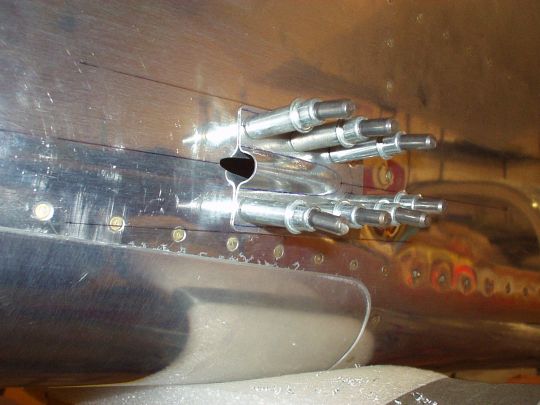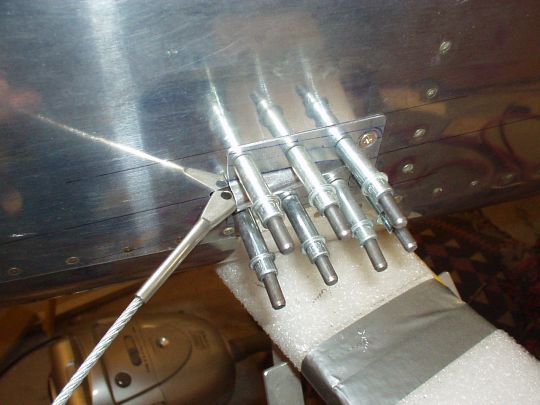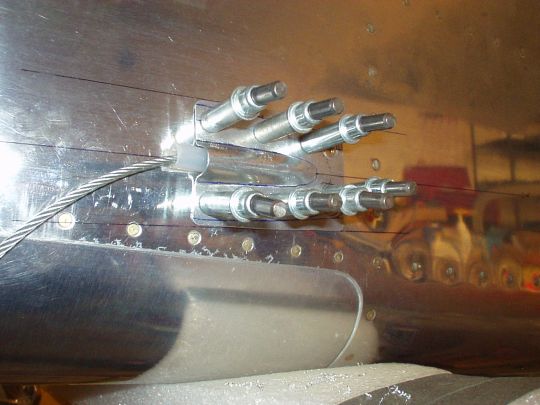|
  

Rudder cable exit fairings
Running Total Hours:
0.0
 | 2009.12.21:
(1.0) The stock kit has the
rudder cables exiting the rear fuselage through elliptical slits in
the skin and a plastic tube as a fairlead. A common builder mod
is to add aluminum fairings to the cable exits. Looking at one
versus the other, I'm actually not convinced that there would be any
significant difference in drag one way or the other. But the
fairing does strengthen the skin where it's been weakened by the slit,
it does keep the plastic tube from flopping around, and it also just
cleans up the aesthetics. So, I made some fairings from thin
sheet aluminum.
I've seen many variations on how other builders have done these, how
they've fitted and attached them. One mistake many builders have
made (a mistake in my opinion anyway) is to permanently attach the
fairing in such a way that the cable is then trapped and can never be
removed from the fuselage because the cable ends won't pass through
the faired exit. Another variation that is slightly better but
still not to my liking is to make the fairings removable via screws,
nutplates, etc. A lot of extra hassle and weight. I
decided to permanently attach my fairings with rivets but in such a
way that the cable end can still pass through the faired exit, just
barely. This is actually easily done. It means that there
will still be a bit of the slit visible aft of the fairing, but I
think that's fine. In any case, I plan to let the plastic tube
reach all the way to the aft edge of the fairing, or maybe even
slighly past.
Note that the two cable ends are not identical. The aft end
(that attaches to the rudder) has a clevis, while the forward end
(that attaches to the pedals) has a single tab that will be captured
between two straps. The forward end is narrower than the aft
end, and I've only provided enough clearance for the forward end to
pass through the faired exit. This means that the cable has to
be inserted from the outside, forward end first. This BTW is
also the preferred method for making it easier to pass the cables
through the snap bushings that serve as fairleads through the various
bulkheads in the fuselage.



(Note that some filliform corrosion is visible along the bottom edge
of the fuselage skin. I'll remedy it by abrading away the
corrosion and then coating with alodine.) |

  
|
|